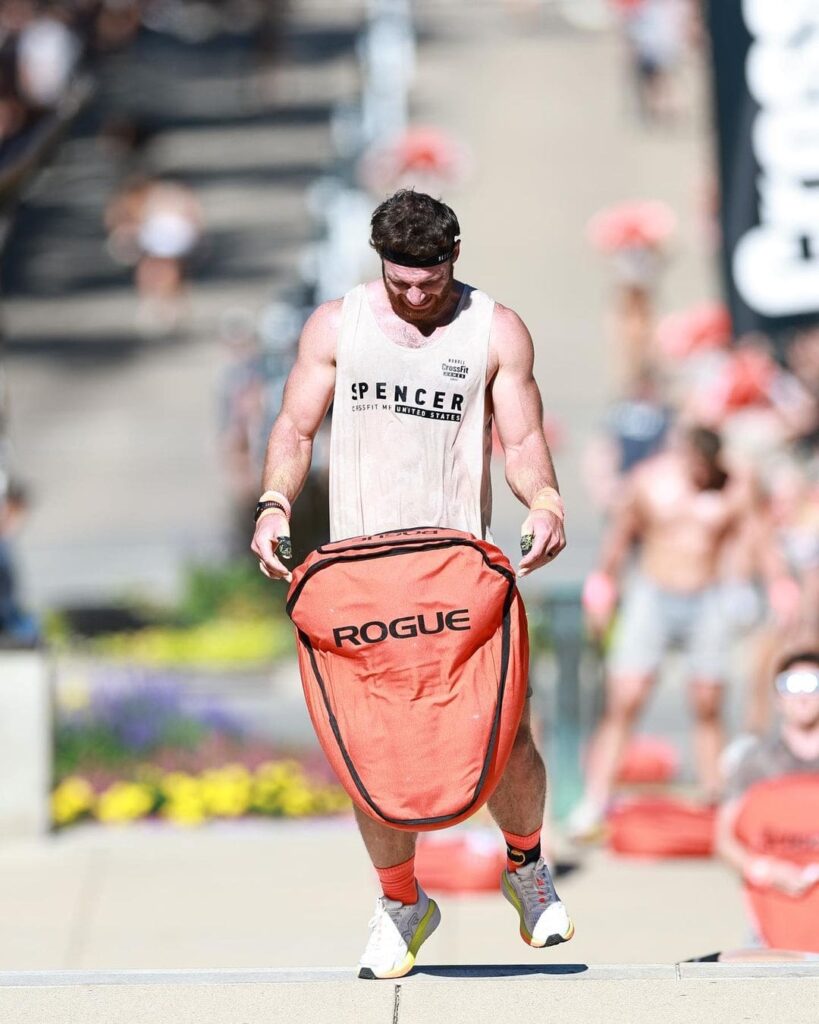Do This Exercise EVERY DAY for Muscle Gains! (Skinny Guys)
Try this Exercise every day for muscle gains if you want to take your physique to the next level. It has been chosen and explained by Jeff from Athlean X.
Do This Exercise Every Day for Muscle Gains
“If you are a skinny guy and you struggle to put on muscle with your traditional heavy workouts, you are going to want to watch this and start doing the exercise I show you here every single day. This is something you can do whether you work out that day or not and it is going to provide benefits beyond just strength and size.”
Do This Exercise Every Day for Muscle Gains – The Carry
“The exercise is the carry. Not only is it one of the most versatile, as it can be performed with dumbbells, barbells, farmers bars, kettlebells or even plates, but it can be done in either a large area of space as in gym or walking back and forth in a small space if training at home.”
Benefits of the Carry
“Jesse from Athlean-X has incorporated this exercise into his foundational strength exercises like the squat, deadlift and bench press and it has been helping him to get bigger and stronger on all of his lifts. The main benefit of the carry is that it is especially helpful for those guys that are very skinny when they start lifting and don’t have enough muscle mass on their frames to comfortably support the weight on the bar.”
Deadlift Over the Squat
“It is for this reason that I actually prefer the deadlift to the squat for really skinny guys since they can more easily train with weights that their body can accommodate. When trying to rest a heavy barbell on the “shelf” of upper back muscles that doesn’t exist, it can be distracting and counterproductive for the very hardgainer to get past this early on.”
Adding Weight
“The carry however is something that allows you to get around this issue and start adding significant amounts of weight to the total system (you plus the weights you’re carrying). In addition, because the dumbbells or bars can be held at your sides in line with your center of gravity they are going to allow you to not have to load the spine or compress the vertebrae as much in the process of performing the lift.”
Do This Exercise Every Day for Muscle Gains – Other Types of Carry
“Beyond the strength benefits of the farmer’s carry there are many other significant and often overlooked ones. Most importantly is the posture improvements the carry provides the lifter. As was the case with Jesse, a beginner with terrible forward rounded shoulders and head posture, the carry promotes an upright torso with proper activation of the muscles of the upper back and traps. The fact that this can be done for time allows for an endurance benefit to these quick fatiguing muscles that helps to correct the issues long term.”
As a Conditioning Exercise
“As a conditioning exercise, the carry is one of the best you can do particularly for skinnier guys who are hardgainers. This is due to the fact that the exercise itself is far more muscle sparing and less catabolic than a long 8 mile run daily would be. The caloric expenditure is lower but the weight bearing stress on the bones and muscles is something that is a net positive in terms of muscle gain.”
Do This Exercise Every Day for Muscle Gains – Trap Development
“This also allows for good trap development without having to subject the shoulder joint to the abnormal dow and in motion that something like the rack pull would do. For this reason, this exercise is one that can build the traps without excessive risk to shoulder health.”
Do it Every Day
“This exercise can and should be done every day because it does not impede on recovery from your workout. With no significant eccentric muscle stress applied to the body, it is easy to perform just a few laps of this exercise at the beginning or end of your workout for that day (or even on non-training days) and see all of the benefits mentioned above.”
Video – Do This Exercise Every Day for Muscle Gains
Learn More – Do This Exercise Every Day for Muscle Gains
What Happens If You Eat Nothing For 3 Days?
7 Ways to Boost Metabolism and Burn Calories According to Science
5 Ways To Burn More Fat At The Gym
10 Real Ways To Speed Up Fat Loss – Dial In Your Nutrition & Training
5 Surprising Fat Loss Mistakes You Might be Making
Why You Should Never Copy a Pro Athlete
5 Tips To Flatten Your Stomach Permanently
9 Things Nobody Tells You About Losing Weight
How Many Times a Week Should You Work Out?
Ectomorph vs Mesomorph vs Endomorph: Which Body Type Are You?
14 Tricks On How To Lose Belly Fat Effortlessly
What Happens to Your Body on Testosterone?
Muscles of the legs
The muscles of the legs are responsible for carrying out a variety of movements and actions. They give us the ability to stand upright and walk, jump, run, kick and even pedal. The muscles of the lower leg (or hind leg) consist of five main groups: extensor digitorum longus (EDL), fibularis/peroneus, gastrocnemius, gluteal muscles (glutes), hamstrings, iliacus and psoas major; rectus femoris; sartorius; soleus/plantaris.
Do This Exercise Every Day for Muscle Gains – Tibialis Anterior
- Tibialis anterior: This muscle is located along the shin. It helps you to flex your foot and move it inwards, as well as rotate it slightly.
- Location: The tibialis anterior is found on the front of your lower leg.
- Function: This muscle bends your ankle forward and upward so that you can walk on tip-toe or stand on one leg for long periods of time without falling over.
- Exercises/activities: When runners or cyclists are trying to increase their speed, they need to push down harder with their feet against the ground in order to propel them faster forward. To do so requires strong tibialis anterior muscles which means more efficient running or cycling!
Do This Exercise Every Day for Muscle Gains – Extensor Digitorum Longus
The Extensor Digitorum Longus (EDL) is an important muscle of the leg that extends the toes and dorsiflexes the ankle. It is located on the lateral side of your lower leg and has two heads: a medial head and a lateral head. The deep fibular nerve innervates both heads, but they have different actions:
- Lateral EDL – It extends your toes toward your big toe when you spread your toes apart, as in doing toe exercises or shaking out your shoes after walking on them too long with sweaty socks inside them.
Do This Exercise Every Day for Muscle Gains – Fibularis/Peroneus
The peroneus muscles are located in the lateral compartment of your lower leg. They provide ankle and foot stability and help to plantarflex (point) your foot at push-off during walking or running.
They are named for the bones to which they attach:
The fibularis muscles are located in the posterior compartment of your lower leg, where they primarily flex and evert (invert) your foot at push-off during walking or running. They can also assist with dorsiflexion (bend) at mid-stance, especially when standing on one leg.
Do This Exercise Every Day for Muscle Gains – Gastrocnemius
The gastrocnemius muscle is a two-headed muscle located in the back of the lower leg. It crosses both the knee and ankle joints, with its medial head attaching to the medial condyle of femur (thigh bone) and its lateral head attaching to fibula (calf bone).
The gastrocnemius muscles are responsible for plantar flexion (lifting up) of foot.
Gluteal Muscles
The gluteal muscles are the largest muscles in the body and they include the gluteus maximus, medius and minimus. These muscles are responsible for several important functions such as posture, balance and walking or running. The three gluteal muscles work together to support your body’s weight when you stand up straight or walk upright.
The gluteus medius stabilizes your hips during movement. It also helps with turning your foot inward (inversion) and outward (eversion). If this muscle is weak, you may have a tendency to overpronate which puts added stress on joints in the feet as well as knee pain due to poor alignment of joints during walking or running
Hamstrings
The hamstrings are a group of four muscles in the back of the thigh. These muscles are used in many daily activities, such as walking and running. They can be strengthened with exercises such as leg curls.
Iliacus and Psoas Major
- The iliacus and psoas major are the two muscles that make up the iliopsoas, which is located in the abdomen. The iliopsoas connects the lower spine to the upper thigh and flexes (bends) the hip joint. It also extends (straightens) your spine when you stand.
Rectus Femoris
- The rectus femoris is a quadriceps muscle that originates on the anterior inferior iliac spine and the linea aspera of the femur. The rectus femoris inserts on the head of the fibula and lateral condyle of the tibia.
The rectus femoris is innervated by branches of both the obturator nerve and superior gluteal nerve; its anterior half can be further divided into four separate bundles due to its extensive vascular supply.
Sartorius
The sartorius muscle is the longest muscle in the body and runs from the anterior superior iliac spine to the medial condyle of the tibia. It flexes and rotates your leg inward.
Soleus and Plantaris
The soleus and plantaris are located in the lower leg. These two muscles are responsible for plantar flexion and inversion, as well as knee flexion and ankle plantar flexion. They are also involved in walking, running, jumping (especially if you land on your toes), standing balance and stabilizing the arch of your foot while you walk or run.
The muscles of the legs
The muscles of the leg are divided into two groups: those that flex (bend) the knee, and those that extend (straighten) it. There are also some leg muscles that either rotate or abduct (move away from the centre of your body) your leg.
Conclusion
The leg muscles are important for movement and posture. They also provide support for the knee joint, which helps us stand upright and walk. If you have any questions or concerns, please consult your doctor.
No Byline Policy
Editorial Guidelines
Corrections Policy
Source

